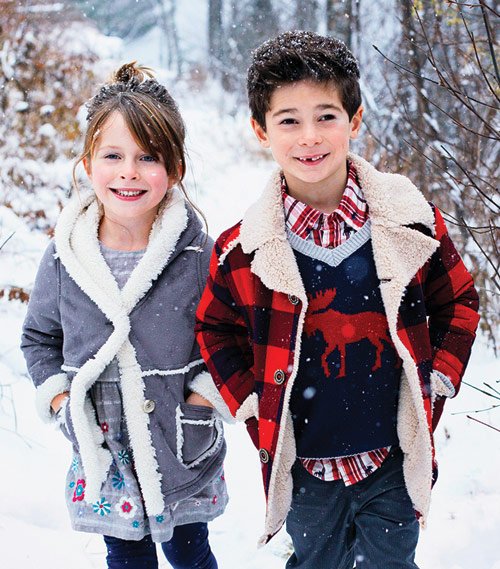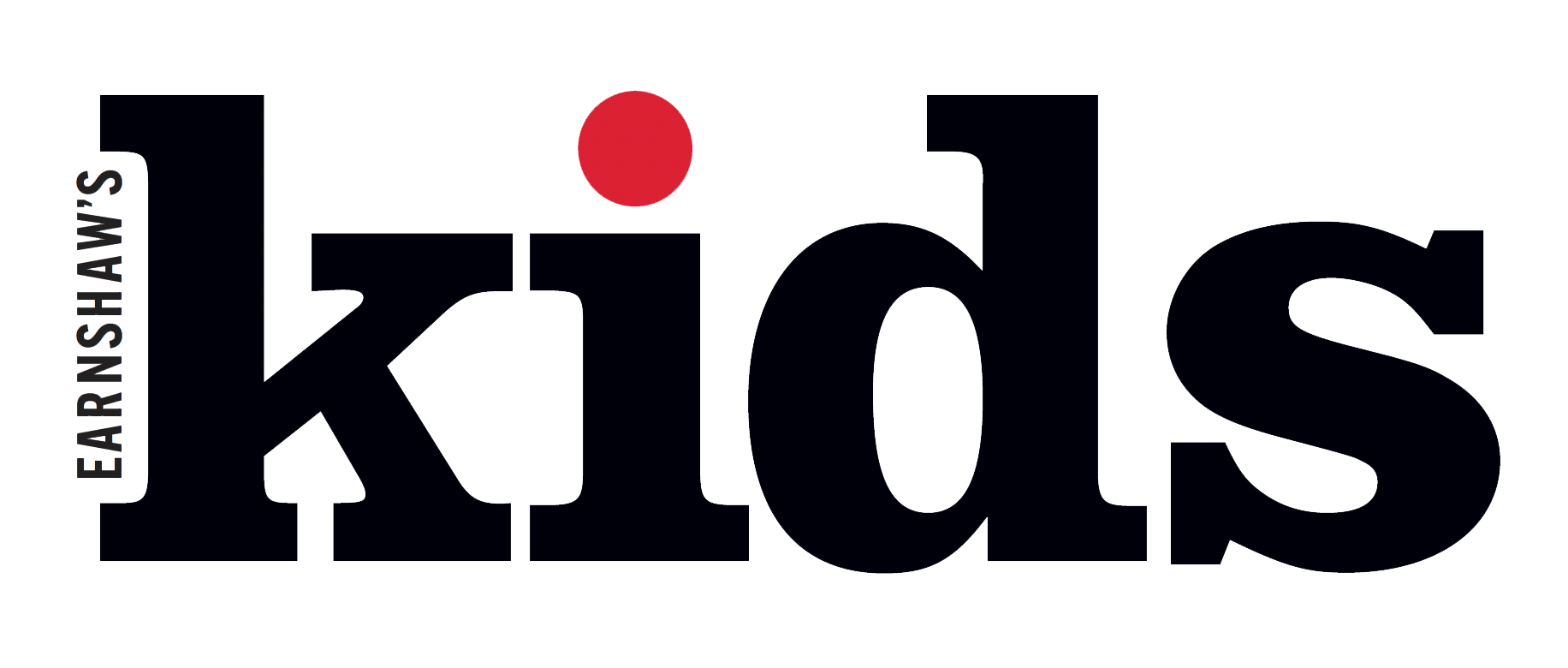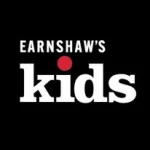Outerwear Retailers and wholesalers navigated another warm year, a presidential election and a jittery consumer.

Outerwear by Hatley
No matter how you slice it, 2016 will go down as the year of the unprecedented presidential election. Whatever your political affiliation, there was no denying that it caused such a distraction to the average American that less attention was paid to shopping. As of press time, the jury was still out on whether retailers could recoup those losses within the all-important holiday selling period.
Retail typically slows in election years—retail spending stagnated in 2000 and again in 2008 when new presidents were voted into office. Once uncertainty rears its ugly head, consumers tend to keep a death grip on their wallets.
But 2016 could claim another first: the warmest year on record. The World Meteorological Organization (WMO) announced that it was projecting a record year based on data that temperatures around the world, from January through November, were 1.69 degrees Fahrenheit above the 1961–1990 average, which the WMO uses as a baseline. In the U.S., NASA recorded October 2016 as the second warmest October on record. Coming off of 2015, which currently holds the record as the warmest year, followed by 2014 which is a close second, and the children’s outerwear industry has felt the heat.
The presidential distraction, the warm weather combined with competition from big-box and off-price stores and their rock-bottom prices all conspired to make the outerwear category challenging this year for retailers and brands alike. That said, a number of unrelated trends also emerged to make the story of outerwear in 2016, while complicated, a more positive one than doom-and-gloom.
According to an informal poll conducted in December, retailers and brands reported that 2016 was shaping up to alleviate a lot of the damage 2015’s warm weather caused in the sector.
Lynn Husum, vice president of children’s outerwear brand Appaman, concedes that even though there was some hesitation on the part of retailers to buy outerwear in the January and February markets, the majority of retailers came on board and repurchased. “We did not see a dip in outerwear sales, although the conversation was active,” she says. Pent-up demand on the part of the consumer was also rampant this year. Thankfully, the nature of childrenswear also saved itself: Because kids outgrow clothing so quickly, if a parent didn’t buy a coat for their child last year, they would have had to do so this year. “You can get away with it for one season,” Husum says, noting that you can only layer for so long. For fall, Appaman saw a slightly longer puffy coat for boys doing well in urban areas while the short puffy and bomber styles checked in rural areas. The sweet spot price-wise ranged between $115 and $145 retail. Husum is optimistic about 2017, noting that stores that didn’t buy enough goods this year will come back with stronger orders in the future. To that end, Appaman will be expanding its offering for Fall ’17 with unexpected colorways and novelty fabrics. “We’re pretty confident it will be a great year for outerwear,” she says. “It’s something that every kid needs.”
British brand Joules echoed Appaman reporting “strong sales” in the outerwear category this year. Bestsellers for both girls and boys were heritage quilted jackets and rubber rain jackets in fun prints such as dinosaurs and Dalmatians. Girls’ and boys’ padded coats, formulated to withstand colder temperatures, were also among the top sellers. “We haven’t found that we are too much affected by the weather and with a growing international business, it means it is always cold or raining somewhere,” says Tamzin Law, Joules’ childrenswear buyer. “We are predicting another strong season for Fall/Winter ’17 in line with management expectation, with a large focus on back-to-school.”
Brands tended to keep fashion safe and offered traditional shapes and colors this year, notes Erin Rechner, senior editor for kidswear at trend forecasting firm WGSN. As for other outerwear styles that did well, fur-trimmed parkas, colored puffers and printed ski jackets checked briskly. Function and warmth were the focus for girls with the fur gilet, metallic jackets and denim jackets sprinkled into the mix. For boys, the sporty look was prevalent in unisex shapes. “As brands begin designing Fall/Winter ’17/’18, expect heritage colors and prints to evolve with shades of army green and updated woodland camouflage patterns in classic puffers and parkas,” Rechner says. “As fur continues to expand for both boys and girls, high-pile materials such as sherpa, teddy bear fleece, fur and velvet will make their way into key bodies including the moto and bomber for earlier deliveries. Three-quarter-length fur coats for girls and sheepskin coats for boys will be important for the winter months.”
By most accounts, 2015 was a disaster for outerwear with temperatures reaching 70 degrees on Christmas Day in traditionally frigid cities like Montreal. The memory of excess inventory still looms large. “It was a warm streak, and I just remember seeing a sea of winter outerwear in stores,” recalls Adam Frost, vice president of sales and marketing for Canadian brand Hatley. “That definitely impacted this year, but we’re not a big technical outerwear company so the weather doesn’t really affect us.” However, Hatley and other brands have found that bumping up its fashionable items and leaving the technical coat-making to brands like The North Face, Canada Goose or Columbia, is a profitable niche in the marketplace. “Our take on winter outerwear at the boutique level is moving toward more fashion that accentuates our apparel program, a mid-layer such as a fleece or a sherpa jacket that you’d wear in October or November,” says Frost.
Frost says Hatley is focusing on providing the customer with the emotional purchase. In other words, the sherpa-lined plaid jacket that makes a little boy look like a lumber jack or the crazy fuzzy poofy coat that turns a little girl into a princess at affordable price points—most coats are tagged less than $100 at retail—can convince parents to purchase a second or third piece of outerwear within one season. It’s a strategy that is working for Hatley now in 1,200 boutiques in the U.S. and 800 in the U.K. and Europe.
Matt Powell, vice president and sports industry analyst for The NPD Group, has noted a shift toward buying lightweight puffy jackets and multiple layers on the part of Millennials, in particular, supplanting the purchase of traditional heavy winter coats. The trend began during the holiday season last year. “Consumers are doing more with less; rather than purchasing specific products for every season or activity, they are buying adaptable and multipurpose items,” he says.
Like brands, savvy retailers are finding untapped niches in outerwear, implementing strategies and finding additional ways to supplement sales.
Carol Yenne, owner of Small Frys in San Francisco’s Noe Valley, says that the highly promotional nature of off-pricers like Burlington Coat Factory has infringed on her outerwear business. She projects sales of outerwear this year will be flat compared with the same period last year. However, she found a need in the market that large retailers have not fulfilled. “We found success in newborn to size 2, which seems to be the category that was ignored in big-box stores,” she explains. The store has had success with brands American Widgeon’s Warm Plus coats and Mayoral. Like Hatley, Yenne also has experienced profits in fashionable coats like sophisticated leather jackets, pleather and leather jackets and Western-style fleece jackets. “People do not see those styles at Burlington,” she points out, adding she generally stays away from ubiquitous brands like Columbia or London Fog. As for her long-ranging expectations for next year, Yenne says she hoping for an uptick buoyed by the end- of-year performance of the stock market. “I’m hoping that customers are going to be more relaxed,” she says.
In Dallas, The Cozy Cottage Children’s Boutique notched outerwear sales slightly ahead of last year, largely because of cooler temps. “We’ve done better than average with hats, gloves and sweaters and sweater jackets,” reports owner Cynthia Herndon. “The Farmers’ Almanac says we’ll be a little cooler this year.” A flat November Herndon blames on the election has given way to a stronger December, she says. To offset the malaise, Herndon says she has participated in consumer-focused trade shows on the weekends as well as investing in her online store (on which she says consumers are more willing to pay full-price).
Even in Chicago, famous for its brutal winters, parents were delaying buying coats. There’s confusion about whether a child needs one traditional coat or several coats in multiple weights. “In Chicago, you gotta get your coat in August,” says Jennifer Pope, owner of The Red Balloon with two boutiques in the city. “But people have been hesitant, even ambivalent. They’re not sure if they’re buying for mild weather or severe. The idea of multiple coats is not appealing to parents and, in the past, we’ve never been a market for jackets, but now we’re seeing jackets, vests and knits. There’s definitely more of an understanding that different levels of layers are going to be better utilized than one coat purchase. When I have swimsuits and coats sitting side by side, that tells you we’re all not sure what’s going on.”
That said, Pope reports that outerwear sell-throughs have been good, thanks to convincing consumers that they should purchase the item in August because she can’t guarantee she’ll have the stock or multiple sizes once the blizzard hits. “You know you’re going to need it,” she advises clients. “Buy it now.”
Pope is also encouraged by the prospects of next year. She’s seeing a spate of new wholesale companies pop up—a group of people who can’t remember what it was like when the economy tanked. She sees this as an encouraging economic sign. These new companies could have an important psychological impact on the industry, she reasons. “It’s all new to them,” she says. “We need to get past the conversation of what used to be. We need business optimism in the marketplace.”
























Leave a Comment: